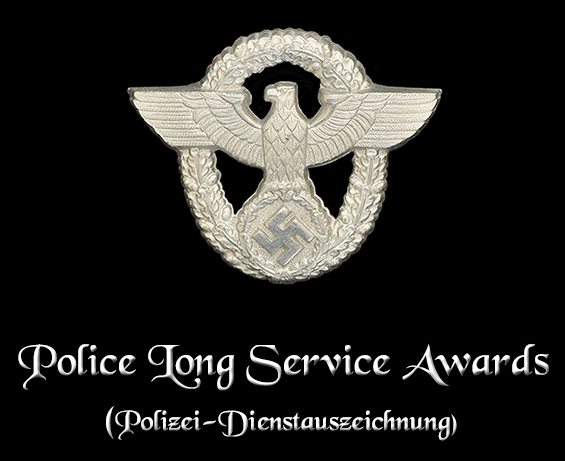

Reichsführer-SS Heinrich Himmler was named Chef der Deutschen Polizei im Reichsministerium des Innern (Chief of German Police in the Interior Ministry) on 17 June 1936 after Hitler announced a decree which was to "unify the control of police duties in the Reich". Traditionally, law enforcement in Germany had been a state and local matter. In this role, Himmler was nominally subordinate to Interior Minister Wilhelm Frick. However, the decree effectively subordinated the police to the SS, making it virtually independent of Frick's control. Himmler gained authority as all of Germany's uniformed law enforcement agencies were amalgamated into the new Ordnungspolizei, whose main office became populated by officers of the SS.
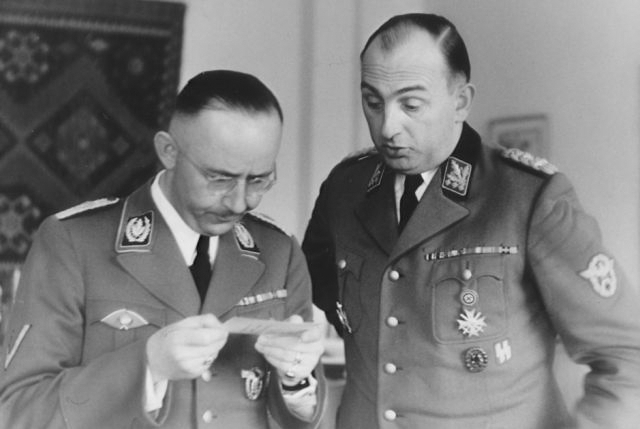
Heinrich Himmler with Chief of the Ordnungspolize, Kurt Daluege at SS headquarters in Hegew
The police were divided into the Ordnungspolizei (Orpo or regular police) and the Sicherheitspolizei (SiPo or security police), which had been established in June 1936. The Orpo assumed duties of regular uniformed law enforcement while the SiPo consisted of the secret state police (Geheime Staatspolizei or Gestapo) and criminal investigation police (Kriminalpolizei or Kripo). The Kriminalpolizei was a corps of professional detectives involved in fighting crime and the task of the Gestapo was combating espionage and political dissent. On 27 September 1939, the SS security service, the Sicherheitsdienst (SD) and the SiPo were folded into the Reich Main Security Office (Reichssicherheitshauptamt or RSHA). The RSHA symbolized the close connection between the SS (a party organization) and the police (a state organization).
On the 30th January 1938, Adolf Hitler ordered the institution of an award for members of the police force who met qualifications based on length of service.
Award Criteria
To qualify for the medal, a person had to be an active member of the police or "an administrator" in the police service. Military service time could also be applied to the total time of service needed for the award.
The award was given in three grades to men who had served for eight, eighteen, and twenty-five years.
On 12 August 1944, a higher grade was authorized for 40 years of service. It was to be in the form of a gold metal bar with the number 40 with oak leafs, to be affixed onto the ribbon of twenty-five years award. There is no record of it being awarded prior to the end of World War II in Europe.
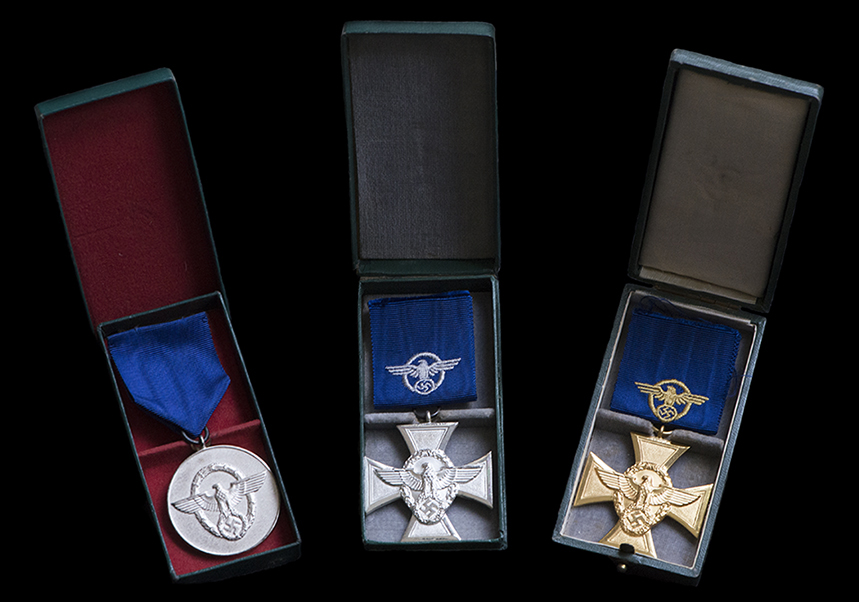

8 Year Police Long Service Award - unissued
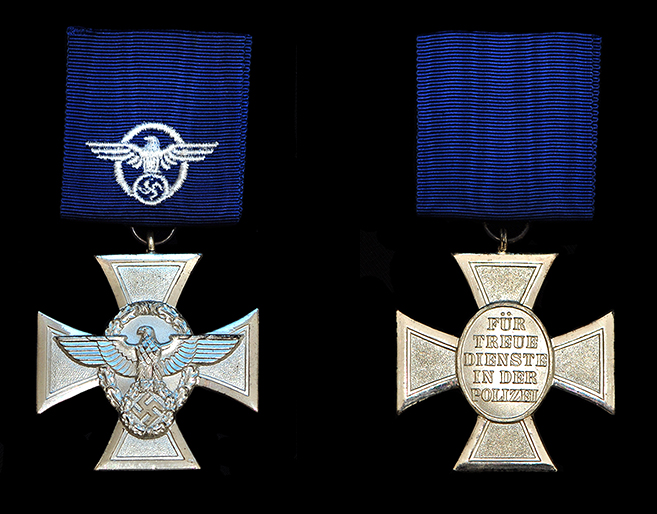
18 Year Police Long Service Award - unissued

18 Year Police Long Service Award - in wear

25 Year Police Long Service Award - unissued

Cases for the 8, 18 and 25 year Police Long Service Award
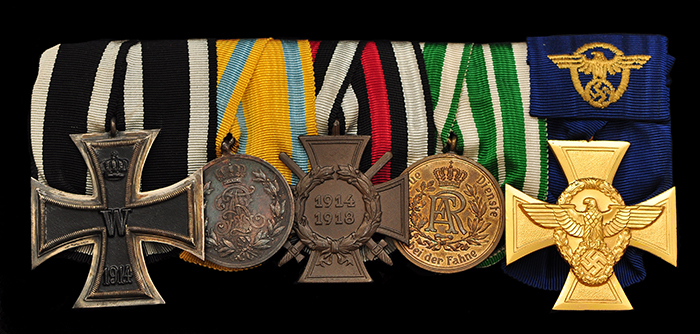
25 Year Police Long Service Award - parade bar

25 Year Police Long Service Award devices on ribbon and lapel bars
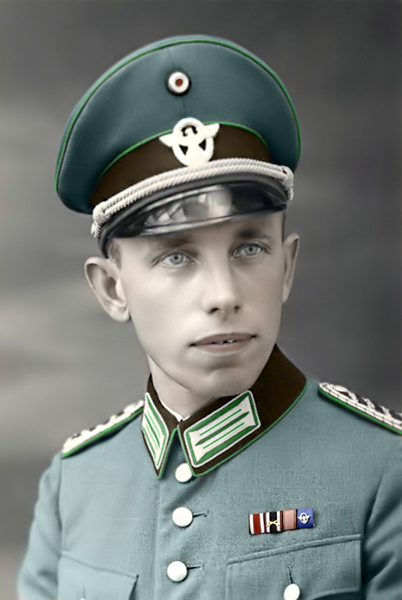
Police Long Service ribbon bar in wear
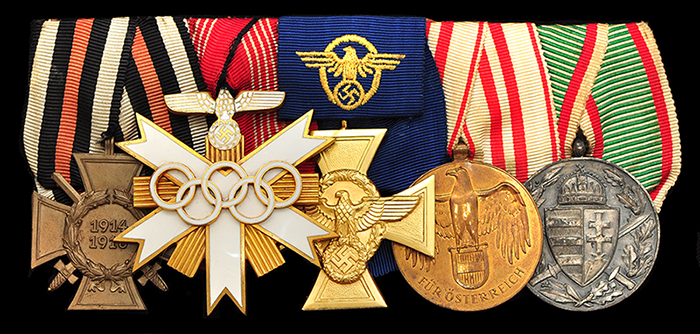
Parade Bar with 25 Year Police Long Service Award and 1936 Olympic Games Decoration 2nd class
Insignia of the Police
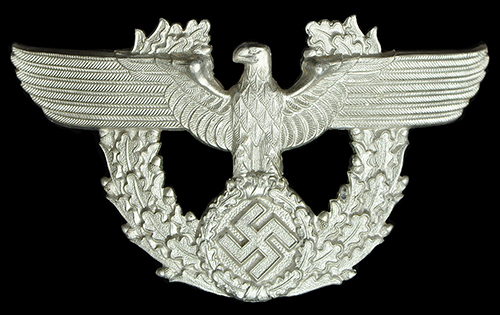
Badge for the police shako helmet
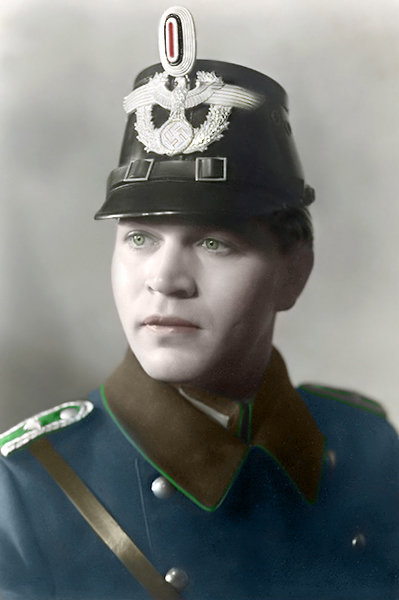
Police shako helmet in wear
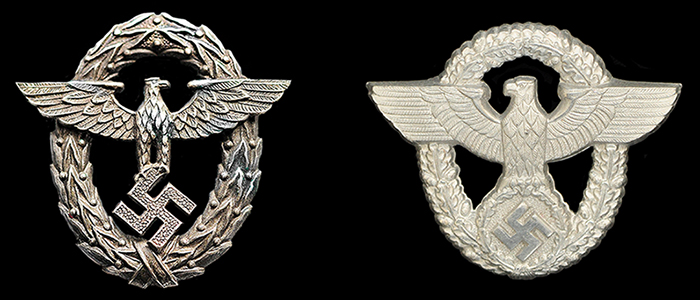
left: 1st pattern, right: 2nd pattern cap badges

Officer's bullion Arm patch

Police insignia - cap badge (2nd pattern) and bullion arm patch in wear

Enlisted/NCO wool arm patch
Water Protection police
(Wasserschutzpolizei)
The Water police (Wasserschutzpolizei) was the equivalent of the coast guard and river police. Tasked with the safety and security of Germany's rivers, harbors, and inland waterways, the group also had authority over the SS-Hafensicherungstruppen ("harbour security troops") which were Allgemeine-SS units assigned as port security personnel.

Insignia of the Water Police (Wasserschutzpolizi) - cap badge
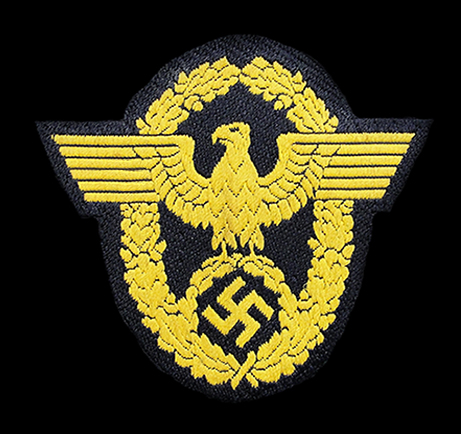
Wasserschutzpolizei (bevo) arm patch
Railway Protection police
(Bahnschutzpolizei)
The Railway police (Bahnschutzpolizei) was made up of full-time and part-time police officers who were employees of the Reichsbahn (state railway). The Bahnschutzpolizei was tasked with railway safety and also with preventing espionage and sabotage of railway property. They were not subordinated to Hauptamt Ordnungspolizei, only the Deutsche Reichsbahn.

Insignia of the Railway Protection Police (Bahnschutzpolizei) - cap badge

Officers arm patch

Arm patch for Bahnschutzpolizei-Anwärter to Bahnschutzpolizei-Oberzugführer
![]()
Feldgendarmerie

The Feldgendarmerie (or Feldjäger) were the uniformed military police units of the armies of the German Empire (including the Wehrmacht) from 1810 in Saxony until the conclusion of World War II.
At the outbreak of the First World War the Feldgendarmerie comprised 33 companies. They each had 60 men and two NCOs. By 1918, the number of companies had been expanded to 115 units.
After World War I all military police units were disbanded and no police units existed in the inter-war Weimar Republic era. Garrisons were patrolled by regular soldiers performing the duties of the military police.
When Adolf Hitler came to power in 1933, Feldgendarmerie were reintroduced into the Wehrmacht. The new units received full infantry training and were given extensive police powers. A military police school was set up at Potsdam, near Berlin to train Feldgendarmerie personnel. Subjects included Criminal code, general and special police powers, reporting duties, passport and identification law, weapons drill, self-defence techniques, criminal police methodology, and general administration.
All prospective candidates served at a Feldgendarmerie command after the first term of examinations. Courses lasted one year and failure rates were high: in 1935 only 89 soldiers graduated from an initial intake of 219 candidates. Feldgendarmerie were employed within army divisions and as self-contained units under the command of an army corps. They often worked in close cooperation with the Geheime Feldpolizei (English: Secret Field Police), district commanders and SS and Police Leaders.
Feldgendarmerie units were generally given occupation duties in territories directly under the control of the Wehrmacht. Their duties policing the areas behind the front lines ranged from straightforward traffic control and population control to suppression and execution of partisans and the apprehension of enemy stragglers.
When combat units moved forward out of a region, the Feldgendarmerie role would formally end as control was then transferred to occupation authorities under the control of the Nazi Party and SS. But Feldgendarmerie units are known to have assisted the SS in committing war crimes in occupied areas.
By 1943 as the tide of war changed for Nazi Germany, the Feldgendarmerie were given the task to maintain discipline in the Wehrmacht. Many ordinary soldiers deemed to be deserters were summarily executed by Feldgendarmerie units. This earned them the pejorative ‘Kettenhunde’ (chained dogs) after the gorget they wore with their uniforms.
In January 1944 as the Red Army began to advance on the Eastern Front, the power of the Feldgendarmerie was superseded by the creation of the Feldjägerkorps. Answering only to the German High Command (OKW), its three regiments were founded to maintain discipline and military cohesion in all branches of the Wehrmacht (including the Feldgendarmerie). Feldjägers were recruited from decorated, battle-hardened officers and NCOs. They had the military authority of the OKW to arrest and execute officers and soldiers from either the Wehrmacht or the SS for desertion, defeatism and other duty violations.
(Wikipedia)

Gorget of the Feldgendarmerie in wear

Cuff title of the Feldgendarmerie
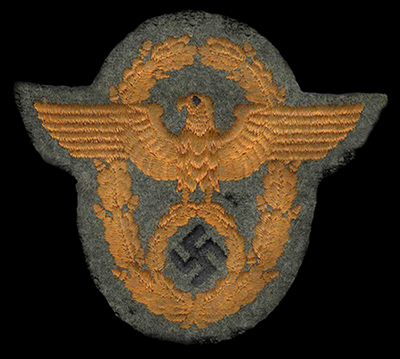
Feldgendarmerie arm patch
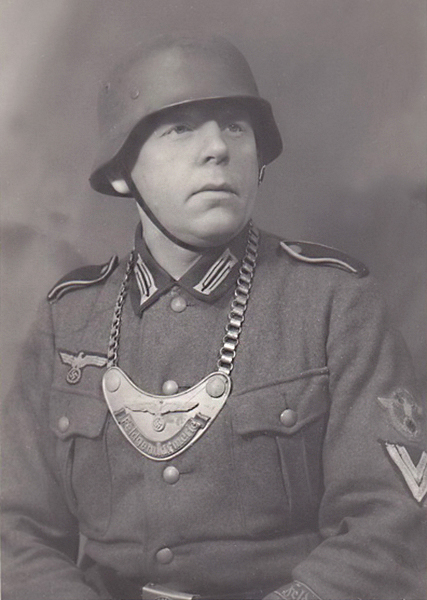
Feldgendarmerie Gorget, arm patch and cuff title in wear
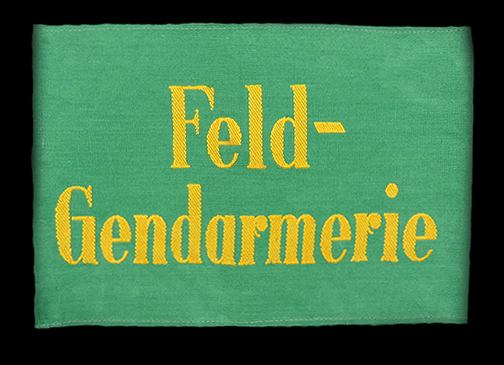
The green Feldgendarmerie arm band was supplied to EM/NCO ranks from other branches of service who were enlisted to temporarily assist the Feldgendarmerie in their policing duties.
The armband was only worn during active policing duties and returned to the Feldgendarmerie issuing authority on completion of the service.
For a comprehensive work on the Feldgendarmerie, the link below will take you to a site on the subject published by Gordon Williamson
Well worth the visit